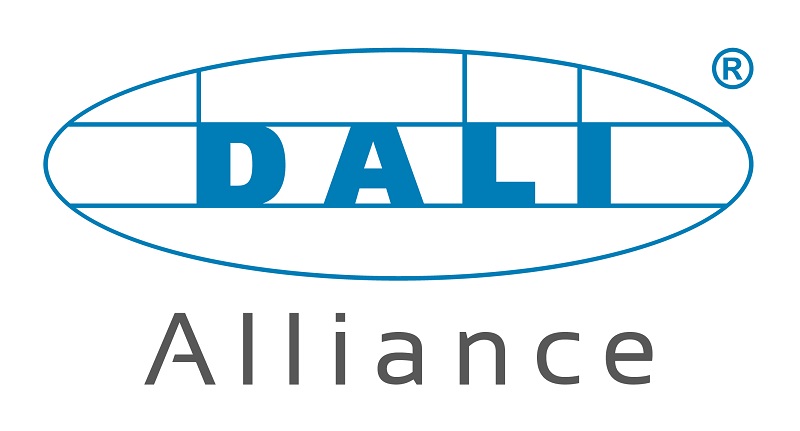

This Initiative Gives Commercial Buildings A Direct Path to Interoperable, Reliable, and Secure Wireless IoT Networks Between Smart Lighting Solutions
DALI has long been a successor to 0-10 volt dimming lighting controls. It adds significant digital control capabilities but has limits including until now a lack of IP support. Today’s announcement is a true gamechanger in the lighting controls industry.
Digital Addressable Lighting Interface (DALI) is a trademark for network-based products that control lighting. The underlying technology was established by a consortium of lighting equipment manufacturers as a successor for 1-10 V/0–10 V lighting control systems, and as an open standard alternative to several proprietary protocols. The DALI, DALI-2, and D4i trademarks are owned by the lighting industry alliance, DiiA (Digital Illumination Interface Alliance).
DALI is specified by a series of technical standards in IEC 62386. Standards conformance ensures that equipment from different manufacturers will interoperate. The DALI trademark is allowed on devices that comply with the DiiA testing and certification requirements, and are listed as either registered (DALI version-1) or certified (DALI-2) on the DiiA website. D4i certification - an extension of DALI-2 - was added by DiiA in November 2019.
Members of the AG DALI were allowed to use the DALI trademark until the DALI working party was dissolved on 30 March 2017, when trademark use was transferred to DiiA members. Since 9 June 2017, Digital Illumination Interface Alliance (DiiA) certifies DALI products. DiiA is a Partner Program of IEEE-ISTO.

The Thread Group, an industry alliance addressing IoT convergence, and challenges around security, energy footprint, and architecture at the network layer, together with the DALI Alliance (DiiA), the global industry organization for DALI lighting control announced that the DALI Alliance has adopted Thread as the first network technology that will be available with DALI+.
The DALI (Digital Addressable Lighting Interface) protocol for digital lighting control enables the easy installation of robust, scalable, and flexible lighting networks. The DALI+ specification announced in early May 2021, brings DALI lighting-control commands to wireless and Internet Protocol (IP)-based systems. DALI+ with Thread will be the first network transport to deliver DALI over wireless, IP-based networks.
Meanwhile, Thread technology solves the complexities of IoT, addressing challenges such as interoperability, security, power, and architecture requirements. It’s a low-power wireless mesh networking protocol based on the universally supported Internet Protocol (IP) and is built using open and proven standards. Thread networks have no single point of failure and include the ability to self-heal. They are simple to set up and use and auto-reconfigure when a device is added or removed. And Thread ensures end-to-end communication -- device-to-device, device-to-mobile, and device-to-cloud -- reliably and securely connecting hundreds, and even thousands, of products.
Thus by using Thread’s trusted mesh networking technology, DALI+ with Thread enables wireless DALI with the same rich set of well-proven lighting control features as well as data-driven functions like real-time monitoring, wirelessly.
The collaboration will also deliver the following benefits:
Sujata Neidig, vice president of marketing, Thread Group states “Smart technologies in the commercial space are transforming buildings into automated structures responsive to the needs of their inhabitants. Our work with partners like the DALI Alliance gives the commercial building community confidence that their IoT choices will deliver the enhanced capabilities and performance they need. We’re looking forward to seeing all the positive ways that lighting technology providers will leverage the power of DALI+ with Thread.”
Paul Drosihn, General Manager, DALI Alliance adds, “The constant evolution of smart building technologies is exciting, but change is also challenging because of the complexities around wireless, including interoperability and security threats,” said. “Partnerships between trusted organizations are central to ensuring seamless and secure interactions between lighting solutions and other IoT technologies. We trust Thread Group’s established and rigorous standards to ensure that smart solutions in the commercial space can co-exist without compromise.”
The availability of DALI+ with Thread is a result of the two associations’ April 2020 liaison agreement. The DALI Alliance is now developing tests for the ‘DALI+ with Thread’ certification program, with certified products and solutions expected to be available shortly thereafter. The DALI Alliance also runs the certification programs for wired DALI-2 and D4i solutions, which has brought nearly two thousand certified lighting-control products to market.
For more information on DALI+, visit the DALI Alliance website. To learn more about the benefits of IP-based mesh networks in commercial environments, visit the Thread Group.

